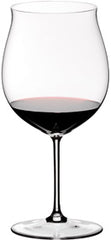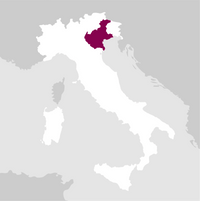Description
A proud, majestic, complex and exuberant wine. A benchmark for the Amarone category, which, together with Barolo and Brunello, makes up the aristocracy of the Italian wine world. The product of Masi’s unrivalled expertise in the drying technique, whereby traditional grapes for the Valpolicella Classica area – Corvina, Rondinella and Molinara – are laid out on bamboo racks to concentrate their aromas in winter.
Details

Perfume

Color

Taste
Serve at:
18 - 20 °C.
Longevity:
10 - 15 years
Decanting time:
1 hour

Pairings
- Start up year: 1772
- Oenologist: Gruppo Tecnico Masi
- Bottles produced: 3.950.000
- Hectares: 560
Masi produces first-class wines primarily from native grape varieties, using traditional methods that embody sustainability and continuous technological innovation. With more than two hundred and fifty vintages behind it, Masi has been owned since its inception by the Boscaini family, which today runs the company with the sixth, seventh and eighth generations. Read more


| Name | Masi Amarone della Valpolicella Classico Costasera 2020 |
|---|---|
| Type | Red still |
| Denomination | Amarone della Valpolicella DOCG |
| Vintage | 2020 |
| Size | 0,75 l |
| Alcohol content | 15.0% by volume |
| Grape varieties | 70% Corvina, 25% Rondinella, 5% Molinara |
| Country | Italy |
| Region | Veneto |
| Vendor | Masi Agricola |
| Origin | Towns of Marano, Negrar, Sant'Ambrogio and San Pietro in Cariano (Verona). Exposure: West and South-West. |
| Climate | After a mild winter and a spring with very little rainfall, the first fortnight of June was characterised by rain combined with warm temperatures, which rose even higher in the second fortnight of July. The combination of these factors led to an anticipation of the various phenological phases by around 15 days. A 15% cluster thinning operation was carried out in July. |
| Soil composition | Limestone and basalt. |
| Harvest | The harvest took place slightly early and with a drop in quantity compared to the average, but with grapes of excellent quality. In Valpolicella, the climatic conditions allowed ideal grape drying. |
| Wine making | Amarone is the result of the ancient method of drying grapes known since Roman times. At the end of September/beginning of October, the best bunches selected in the hills are placed on traditional bamboo racks in drying lofts where the NASA system controls the natural drying process. By the end of January, the grapes have lost 35% of their weight, acquiring a higher sugar concentration. The Corvina grape is naturally attacked by 'botrytis', a noble rot. This is followed by gentle crushing, partial destemming, fermentation for 45 days with selected, highly alcohol-resistant yeast inoculum and malolactic fermentation. |
| Aging | 24 months in 80% in Slavonian oak barrels (40-80 hl), 20% in Slavonian small Allier and oak barrels (40% new barrels, 30% of second passage, 30% of third passage). Then, the wine ages 4 months in the bottle. |
| Total acidity | 5.9 gr/L |
| PH | 3.62 |
| Residual sugar | 9.2 gr/L |
| Dry extract | 32.9 gr/L |
| Allergens | Contains sulphites |




